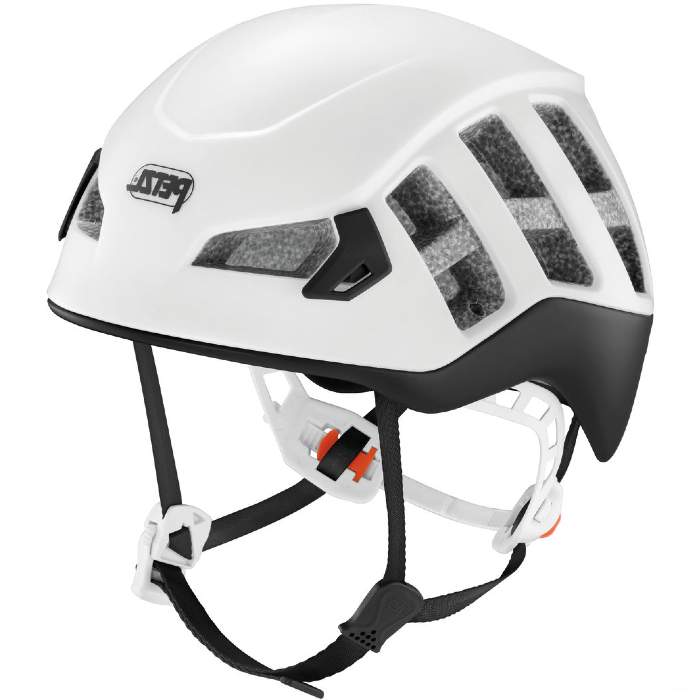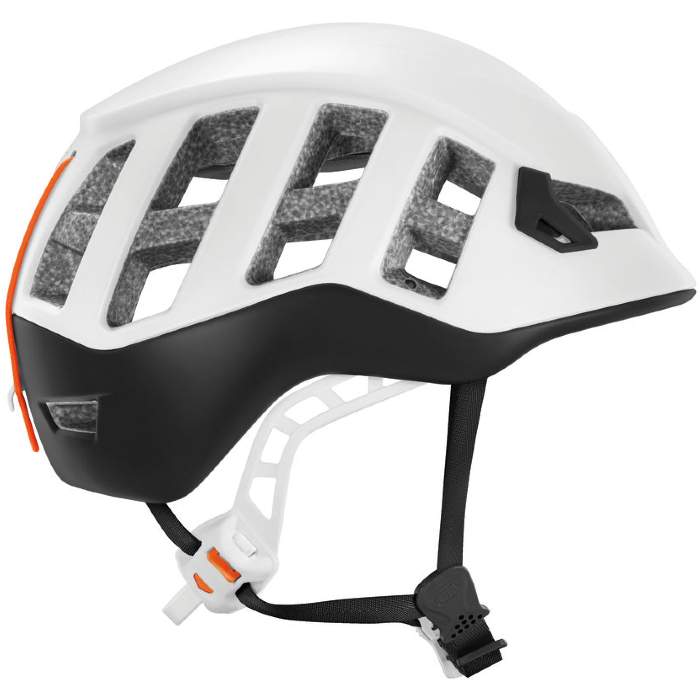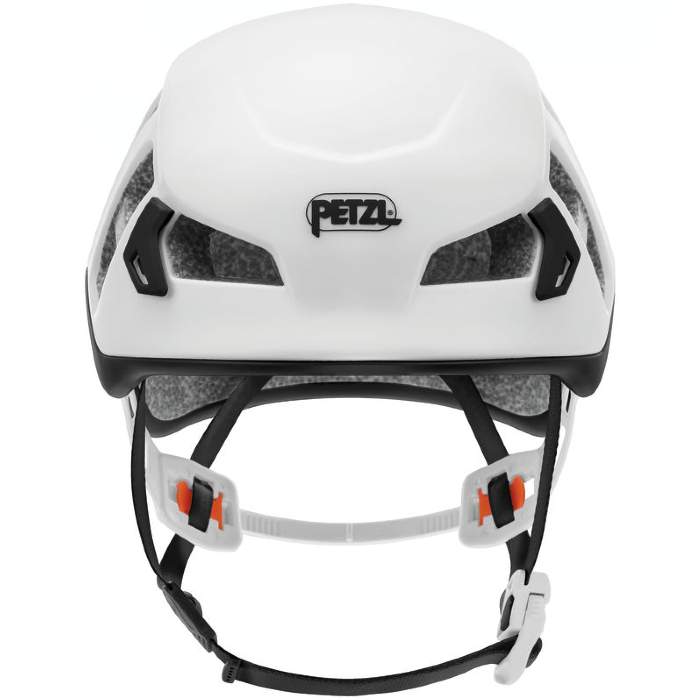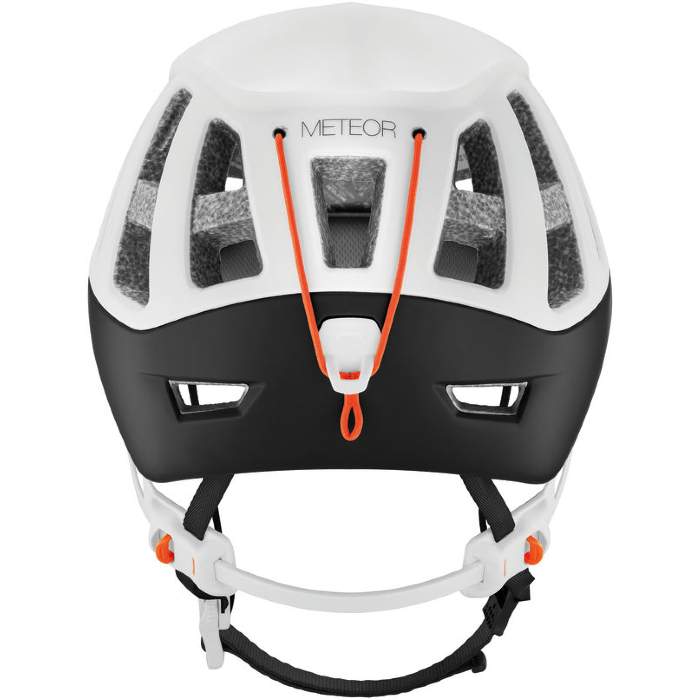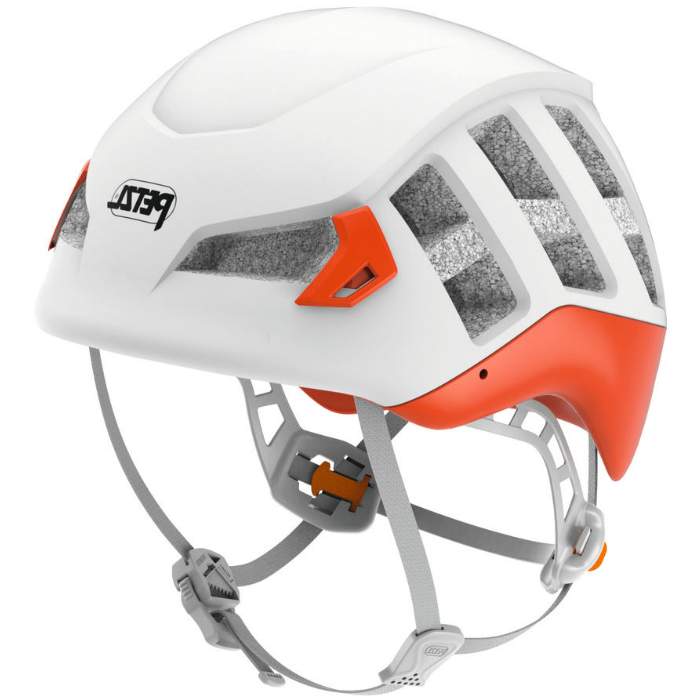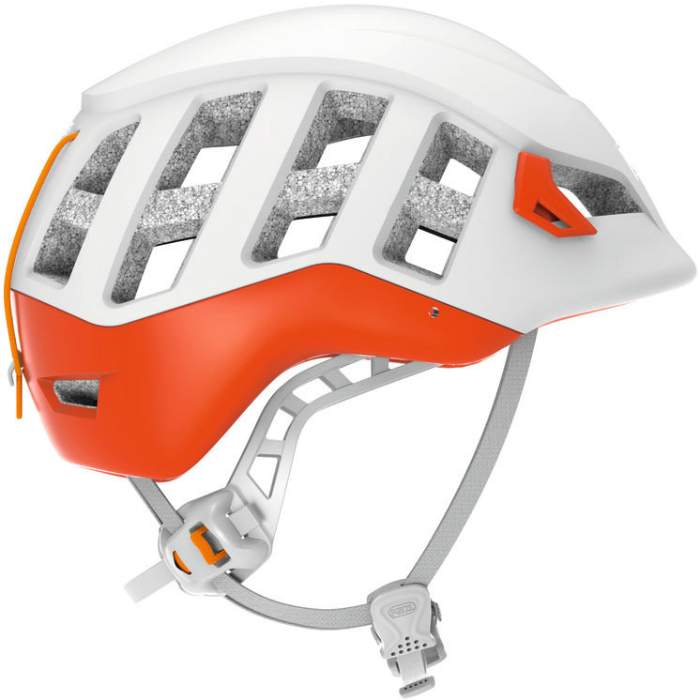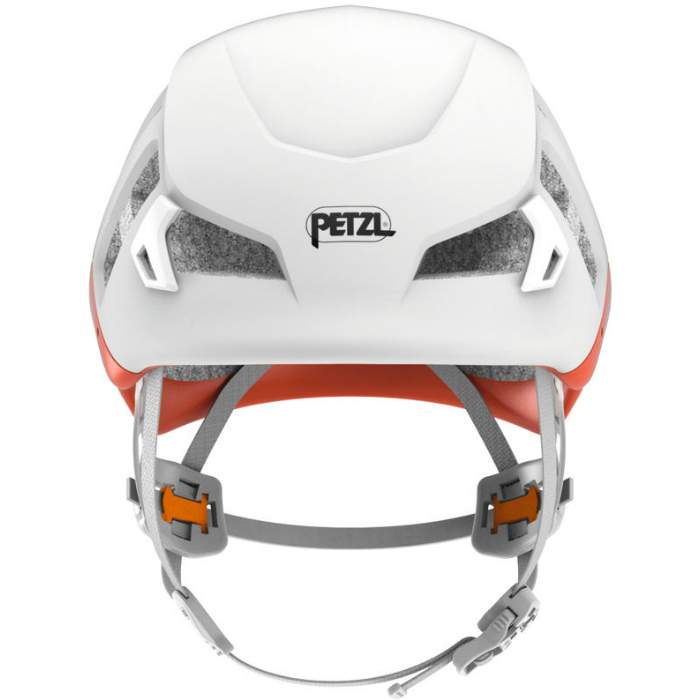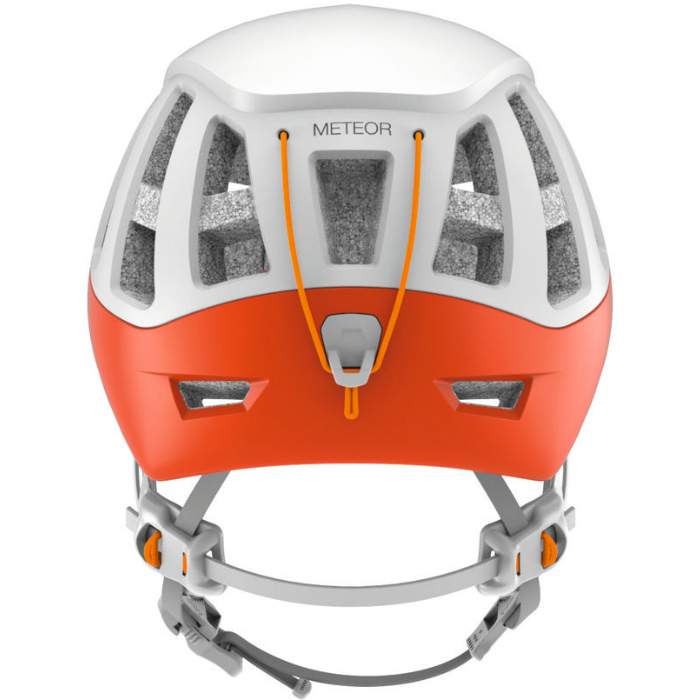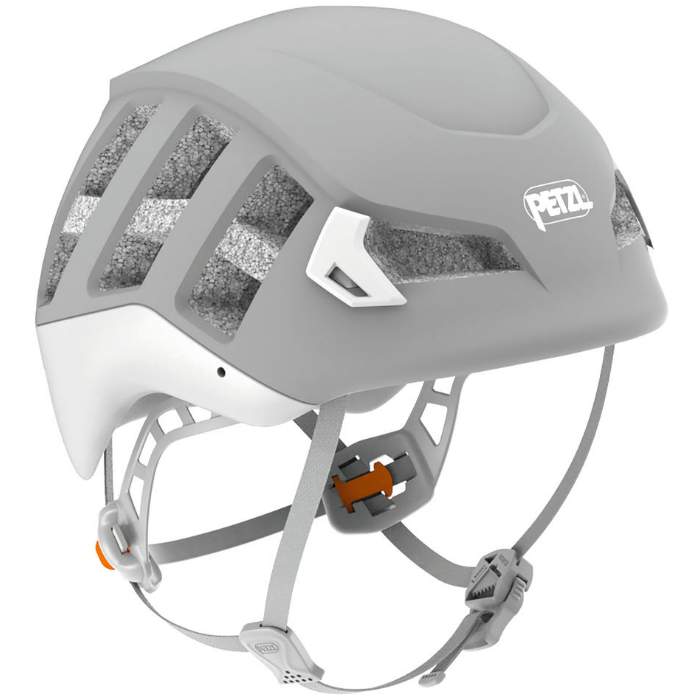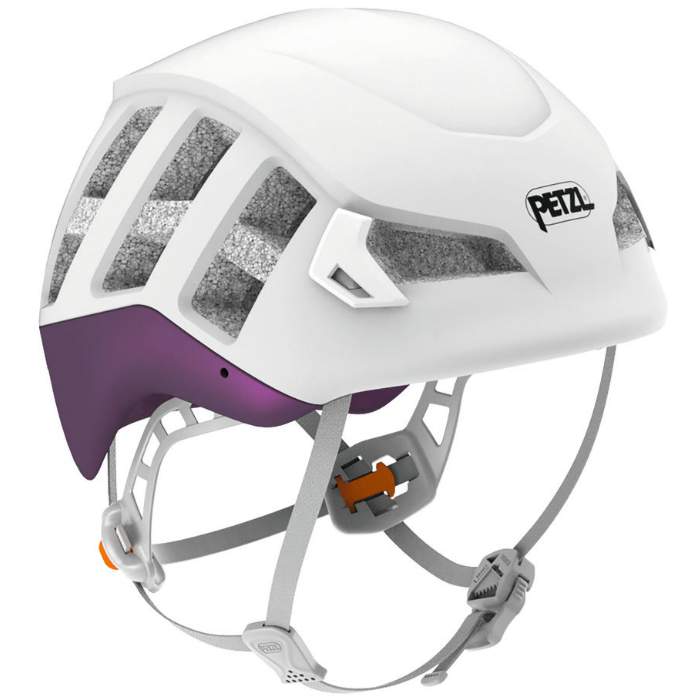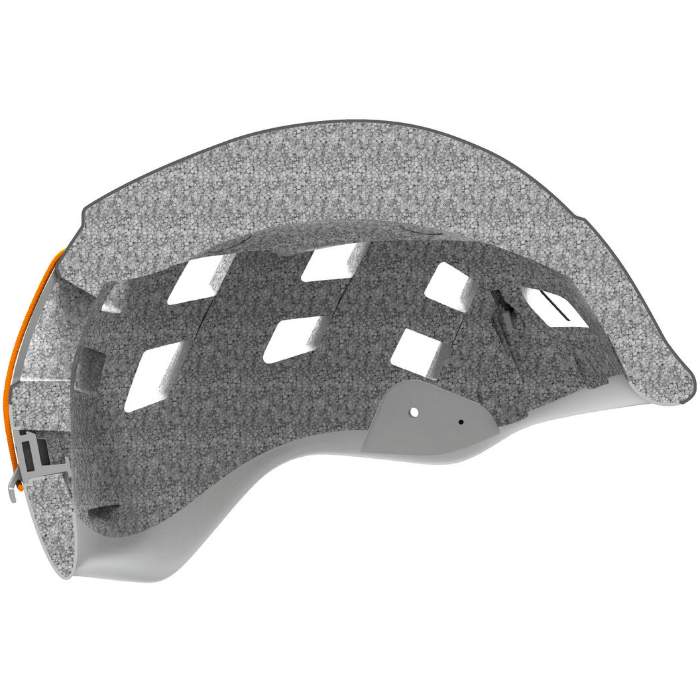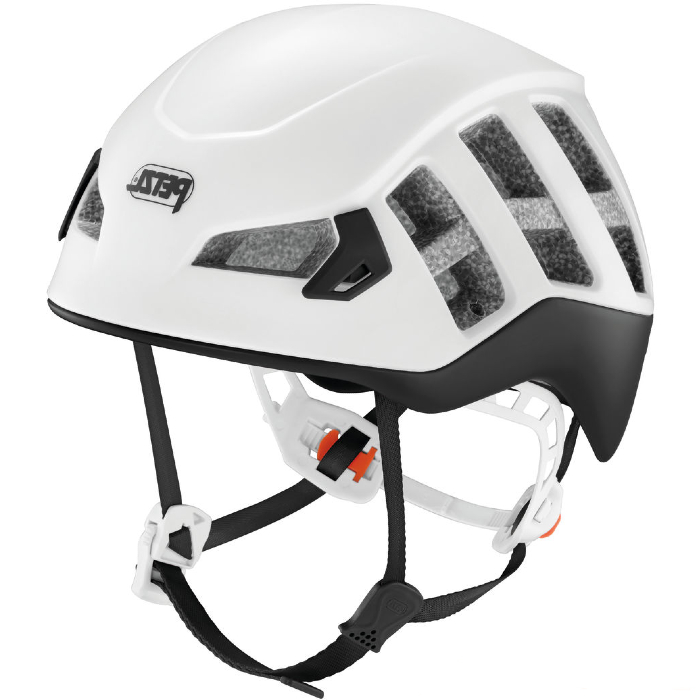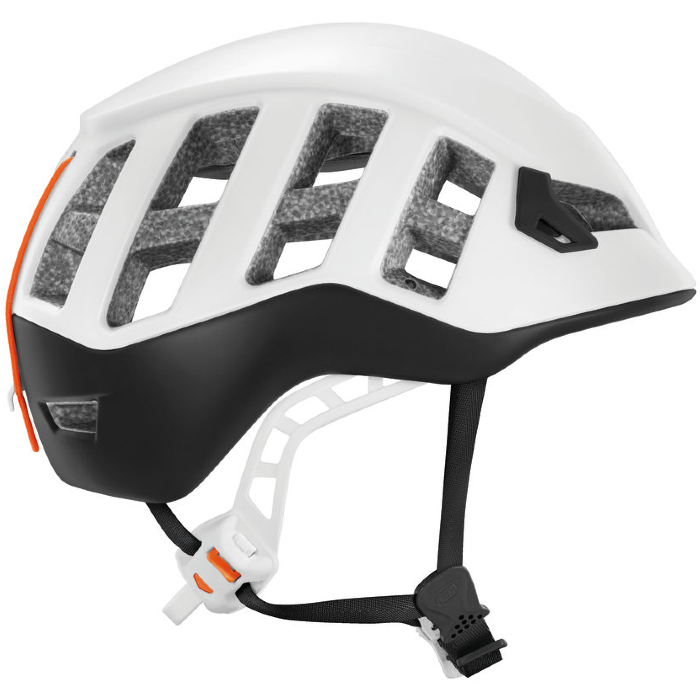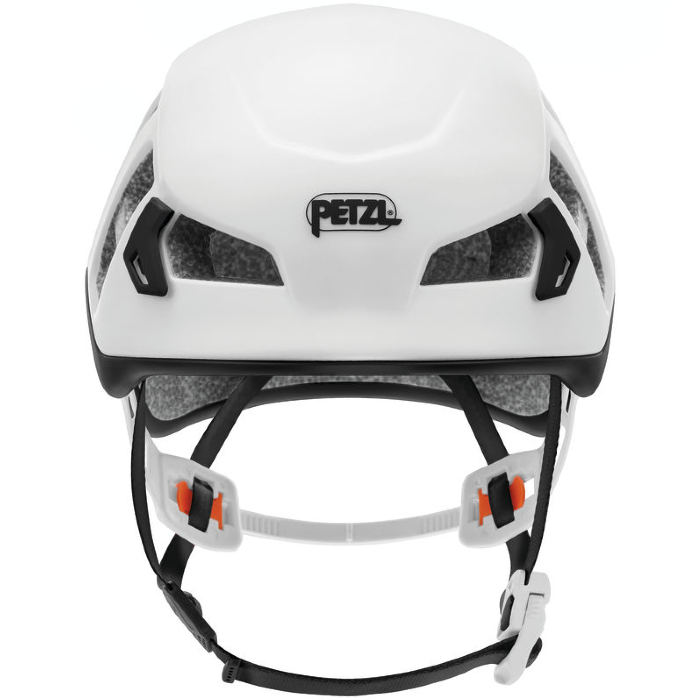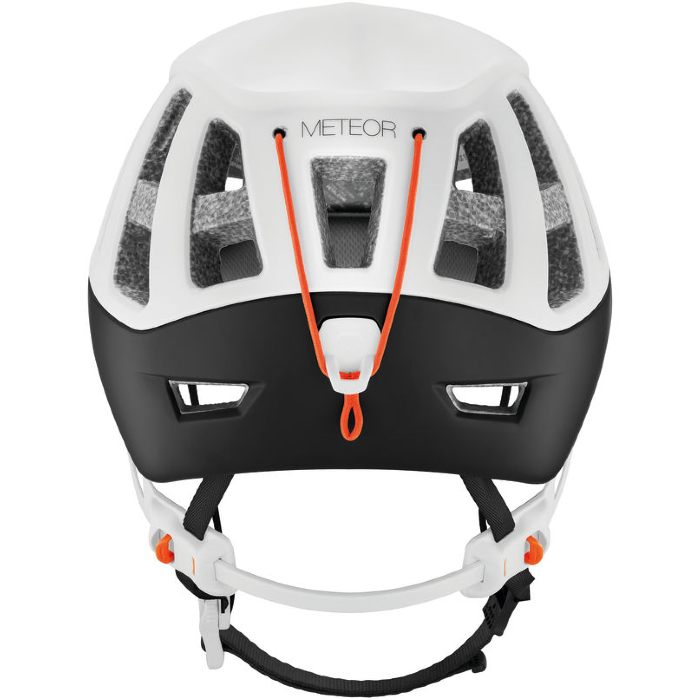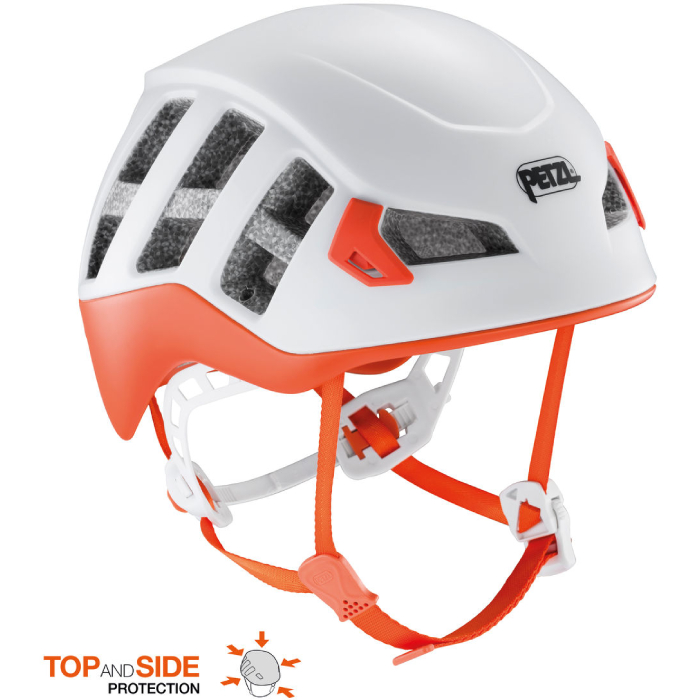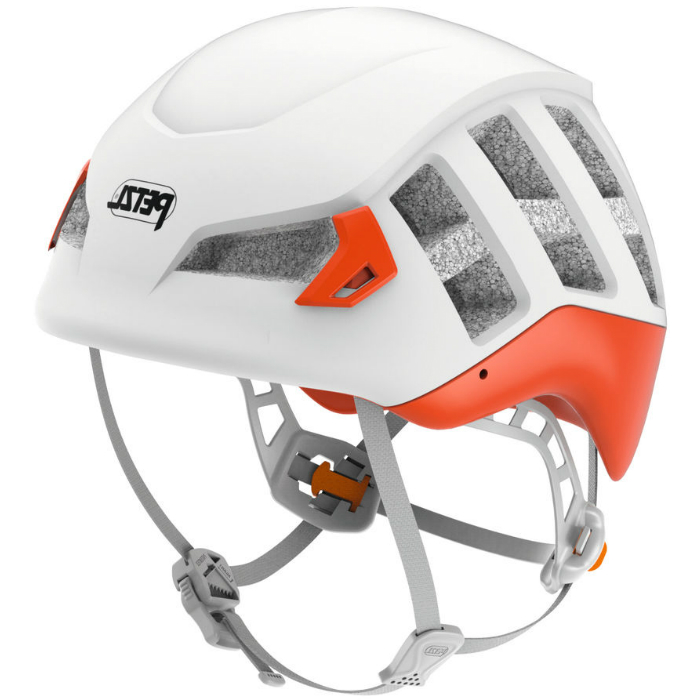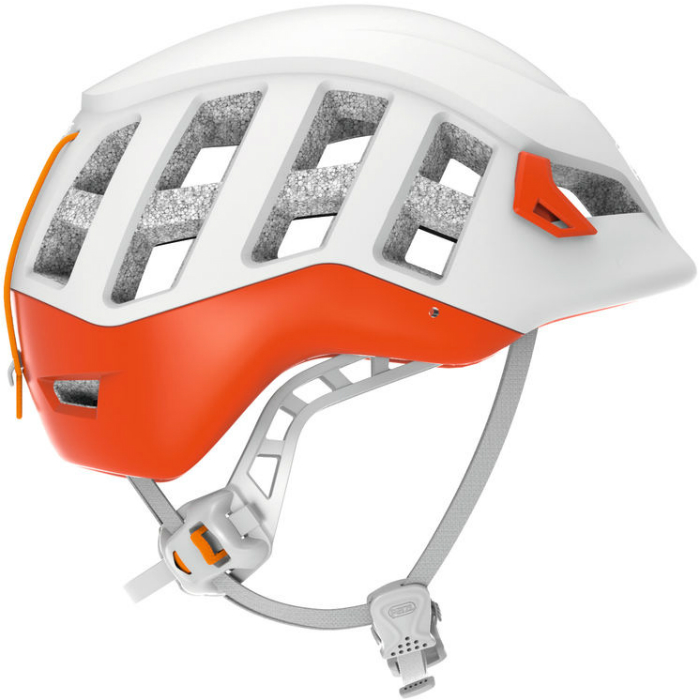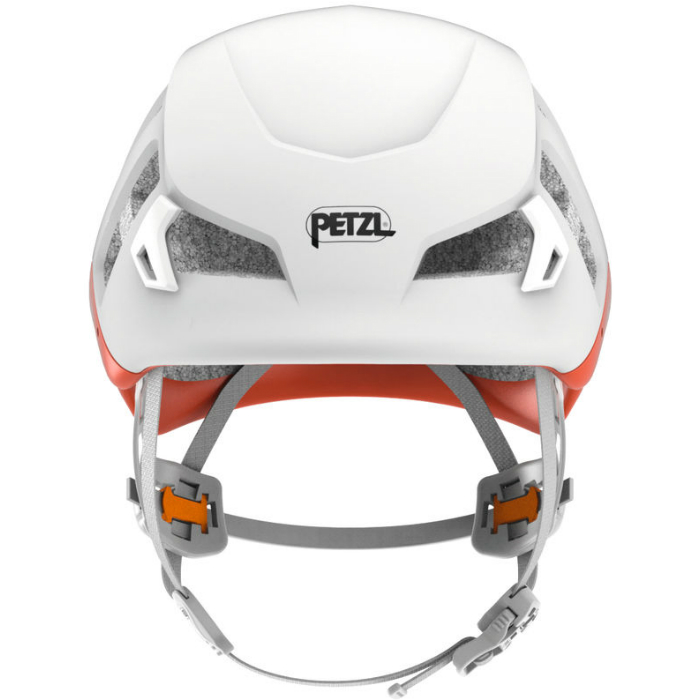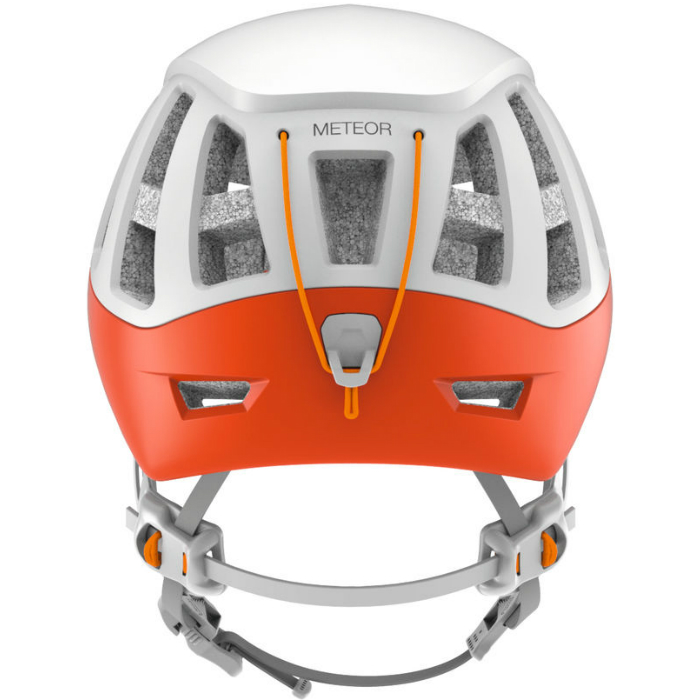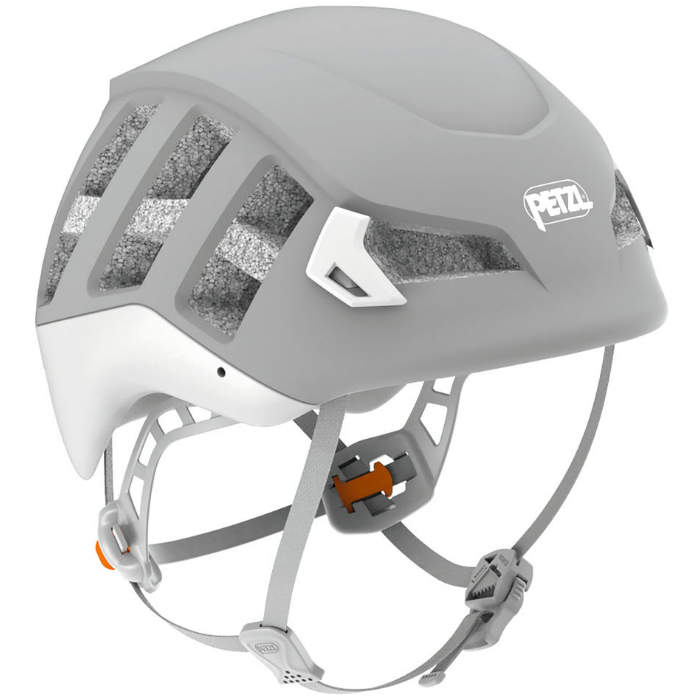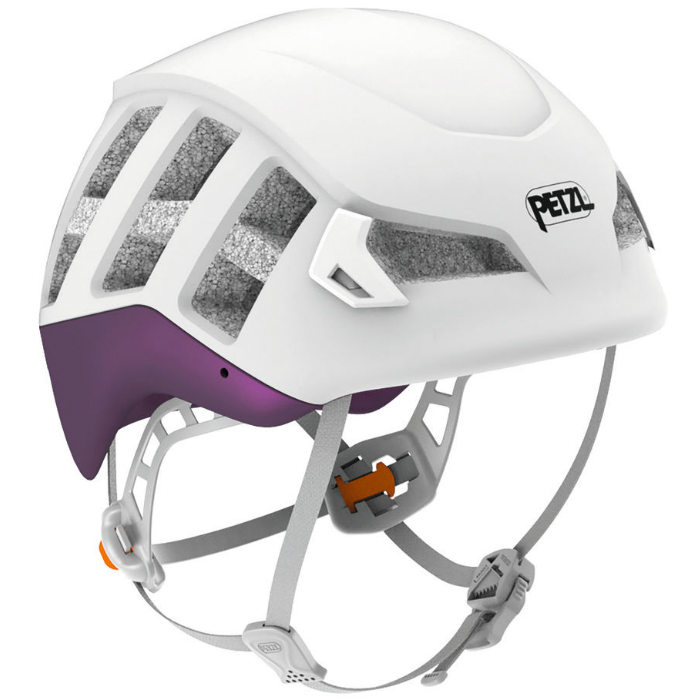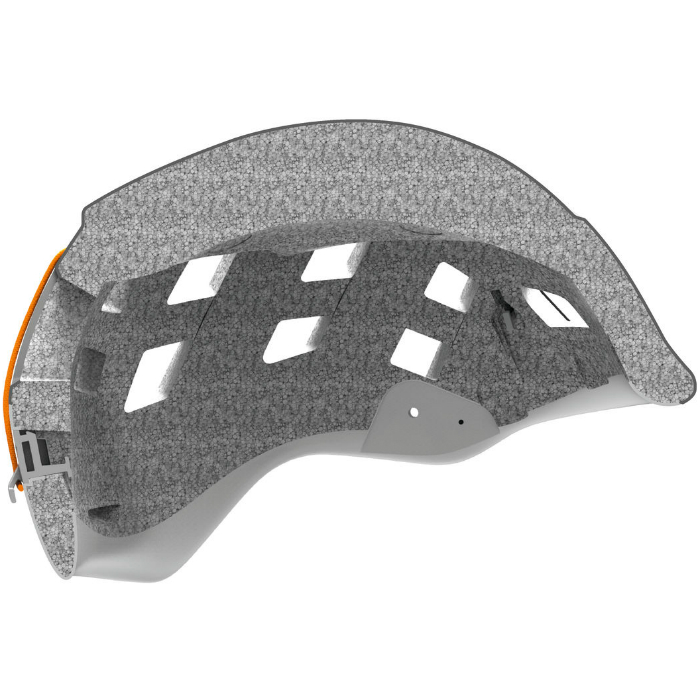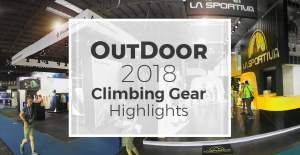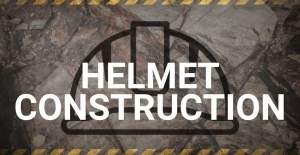Meteor
Description
Lightweight helmet with enhanced protection for climbing, mountaineering and ski touring.
Are you passionate about climbing, mountaineering, or ski touring? The METEOR helmet offers efficient protection for these three activities! Lightweight, compact, and with excellent ventilation, it’s comfortable in any season. The shape provides greater coverage for enhanced head protection and was specifically designed to be worn with ski goggles. Additionally, METEOR is the first CE certified helmet for ski touring (please note this helmet does not meet the requirements of the EN 1077 standard for alpine skiing helmets).
Description
- Lightweight, low profile, ventilated helmet:
- low-profile design of the helmet achieved using In-Mold construction with an expanded polystyrene (EPS) foam liner injected inside a lightweight polycarbonate shell
- large vents, offer excellent air flow
- quality finishing and a sleek design - Enhanced protection:
- designed in accordance with Petzl's TOP AND SIDE PROTECTION label
- designed for optimal protection against side, front and rear impacts - Suited for ski touring:
- first CE-certified ski touring helmet
- optimal ventilation on both the ascent and descent. The helmet can be worn comfortably from the beginning to the end of an outing
- front of helmet is specifically designed for integration of ski goggles
- rear elastic band is compatible with ski goggle headbands
- semi-rigid headband can be adjusted easily, even with gloves on
- two clips in front with a rear elastic band for securing a headlamp to the helmet
- compatible with VIZION and SKREEN eye shieldsNOTE: This helmet does not meet the requirements of the EN 1077 standard for alpine skiing helmets.
Specifications
- Material(s): polycarbonate crown, expanded polystyrene (EPS) liner, polyester webbing
Lightweight helmet with enhanced protection for climbing, mountaineering and ski touring.
Are you passionate about climbing, mountaineering, or ski touring? The METEOR helmet offers efficient protection for these three activities! Lightweight, compact, and with excellent ventilation, it’s comfortable in any season. The shape provides greater coverage for enhanced head protection and was specifically designed to be worn with ski goggles. Additionally, METEOR is the first CE...
Retail price
When you click a link below and then checkout online, no matter what you buy (climbing gear or not), we get a small commission that helps us keep this site up-to-date. Thanks!



Weight (g)  | 225 g Size 1: 225 g / 7.9 oz |
Gender  |
Unisex |
Size Range  | 19.00 in - 24.00 in Size 1: 48-58 cm / 19-23 in |
Features  |
Multiple Sizes Face shield compat. |
Quick Adjust  |
Yes |
Vents  |
Yes |
Headlamp Compatable  |
Yes |
Face Shield Compatable  |
Yes |
| Certification | CE, EN, UIAA |
About the helmet itself, it is very good. It’s so lightweight you barely notice it, it has copious ventilation, holds a headlamp, and is easy to adjust. The only detail I don’t like is the magnetic buckle. It’s fiddliness was tough to cope with when I was wearing gloves, and was almost as tricky barehanded. Impatient, I sometimes let the chin strap all the way out and pulled it off overhead like a T-shirt. A minor glitch in an otherwise excellent and versatile helmet.
In the heat of spring, the helmet was well ventilated, light and super comfortable. We climbed a few routes with funny overhangs—I bonked my head on the erratic features as I made my way up, which put the helmet's durability to the test. Overall, I have been incredibly impressed by the versatility of this helmet and would recommend it for anyone who wants one helmet that is comfortable and efficient to adjust, making it well suited for both skiing and climbing.
The Petzl Meteor wins our Best Bang for the Buck award for lightweight helmets because it offers good value while still cutting down on weight as much as possible. While it is more affordable than our Editors' Choice winning Petzl Sirocco, it's also heavier and scores a bit lower in our overall ratings. If you need a new helmet, want something light, but don't want to buy the most expensive one you can find, then the Meteor is an ideal choice for you.
The Petzl Meteor is a lightweight helmet that complies to mountaineering helmet standards and CE’s new “ski touring” standard. If you’ve shied away from helmets in the past because they were too heavy and uncomfortable and / or you’re looking for a ski touring or mountaineering helmet that comes in at a reasonable price and amazingly low weight, definitely check out the Meteor.
The Petzl Meteor now conforms to the Petzl Top and Side Protection label which means the design and construction offers optimal protection against side, rear, front and top impacts. You have to remember that most head injuries come from impacts against the rock when a climber falls. Injuries from rock fall onto the top of the head are less common. The enhanced ridge at the top of the helmet though means that the Meteor should keep you safe from small rock showers and more often when your partner brings half an icefall down hacking away to find a good pick placement. The top of the Meteor is a great improvement on the previous versions of the helmet, it looks good too!
How to use Petzl Meteor, inspection, precautions for use and additional information with instructional pictures.
A checklist helping you monitor your helmet health, helping to know when to retire your personal protection equipment.
Helpful instruction for how to inspect Meteor Harness.
A checklist helping you monitor your helmet health, helping to know when to retire your personal protection equipment.
Describes with words and helpful photos, how to protect your Petzl helmets.
A pictoral representation of the UIAA-106 and EN-12492 standards for helmets.
The UIAA equipment standard provides a baseline for equipment performance in a test lab under controlled conditions on new equipment. Although these test conditions are relevant to the conditions encountered climbing, conditions encountered at the crags and the condition of the equipment are equally important. This recommendation from the UIAA member federation The British Mountaineering Council (BMC) provides vital equipment information that is NOT explicitly addressed in the standard, particularly failure modes of the equipment and recommendations for the use, inspection, maintenance, and retirement of equipment.

